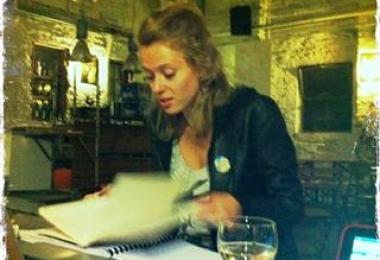East European Performing Arts Platform (EEPAP) supports the
development of contemporary performing arts (dance and theatre)
in 18 countries of Central and Eastern Europe.
Building bridges between Central and Eastern Europe
The Eastern European Performing Arts Platform (EEPAP) is a project initiated in 2011, by the Adam Mickiewicz Institute as part of the Polish EU Presidency that reached countries such as Slovenia, Bulgaria, Hungary, Romania, Slovakia, the Czech Republic and Poland, but also numerous non EU countries. The platform focuses on the fields of dance and theater and is a result of the cooperation between independent experts from Central and Eastern Europe.
The platform is made-up of three main pillars: information, education and co-production, being continuously determined on making possible a more cross-over between different art-forms.
Marta Keil, performing arts curator, co-founder of EEPAP, answered a few questions for culture360.org in order to find out more about this alive and focused-on-artists platform.
EEPAP meeting in Lublin photo: Agencja BlowUp
Florentina Bratfanof: you mentioned the idea of EEPAP traces its origins back to 2008 when, during a conference, you discovered that “despite our common history we have virtually no common experience”. After one year of its actual existence can you share with us some successful initiatives and projects EEPAP accomplished in this sense?
Marta Keil: the EEPAP is dedicated to the contemporary performing arts field, where we all are in a way struggling with the problem of self-definition. This context makes our meetings and common work even more fascinating.
Indeed, even if we all in Central and East Europe have sort of similar history of the last 70 years, the local contexts, depending on social, political situation is very different one from another. For instance, if we start to speak about political theatre, it means something else for each of us and our discussion is blocked in a moment. This is the reason why EEPAP is based not only on integration, but above all on research and educational projects. In 2011, we published a book about Organisation of performing arts in Central and East Europe – a report which aims to describe the infrastructure in which we work day by day. We have done the research in 18 countries. Moreover, we organized a series of international workshops for artists, curators and thinkers, to discuss the contemporary theatre and dance in Europe in the political and social context. Among several meetings and study visits we have also initiated a first residencies programme and a project of contemporary performing arts dictionary and started the preparations to establish an Institute for Performing Arts in Lublin (Poland), where the EEPAP has its office.
[FB]How are the artists and the institutions included in this platform? Is there a selection process, or is it open to anyone?
[MK] The platform has two main fields of activity: the network and the research and educational project. The network is open to every active performing artist, curator, thinker, researcher, theoretician from Central and East Europe. We offer a website, which is a tool to publish one’s work, find partners, get to know each other, discuss. The research and educational projects are curated and organized by the team of the EEPAP initiators. We have chosen the artists and institutions to work with during our two-year long preparations, travels, meetings, ex-changes of thoughts and needs. We are working on finding the funds by ourselves. At the same time EEPAP is open for new ideas and initiatives coming from our partners and contributors, if they are open to work together on finding the financial resources to make it real.
Frankly speaking, if you want to build an organization based on a network structure and avoid any financial contribution from the participants, then it is very hard to define the concept of membership. We are working on it right now, discussing this situation with our more experienced friends and partners, who initiated important networks, as IETM or Nomad Dance Academy.
What is crucial for EEPAP is to focus on concrete activities, instead of only meeting, talking and discussing the structures.
[FB] EEPAP is the kind of network that focuses on supporting artists to produce their work. Please tell us more about the co-productions the platform initiated.
[MK] So far we had no chance to produce the performances – our resources do not allow us to step into such a big scale of projects. On the other hand, big co-productions and festivals are not our goal. We are based on the research and educational activity, although some of the workshops and research projects may finish with ‘a product’ – a performance or publication.
SEE MORE:
Building bridges between Central and Eastern Europe | The EEPAP
Source: http://culture360.org/magazine/building-bridges-between-central-and-eastern-europe-the-eepap/


